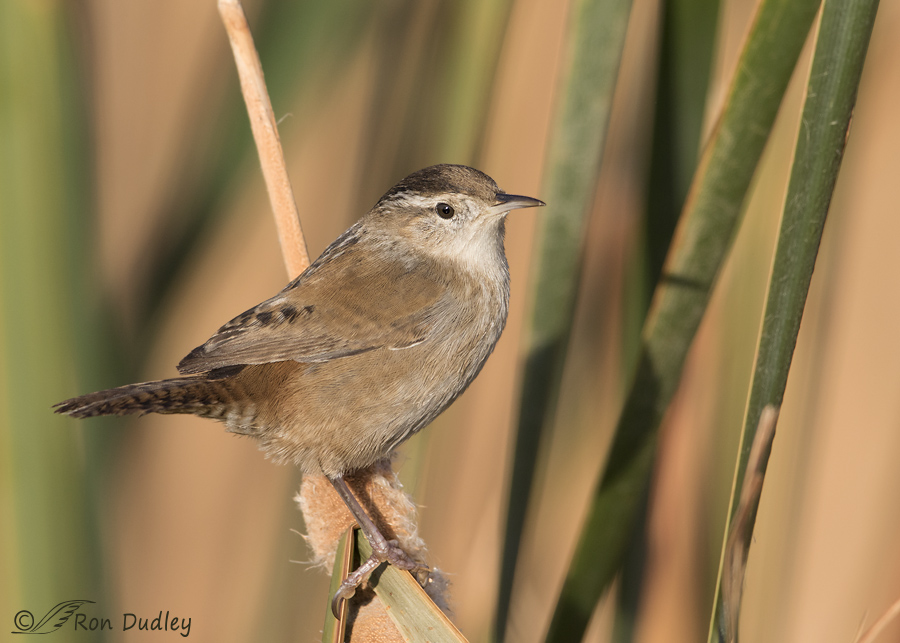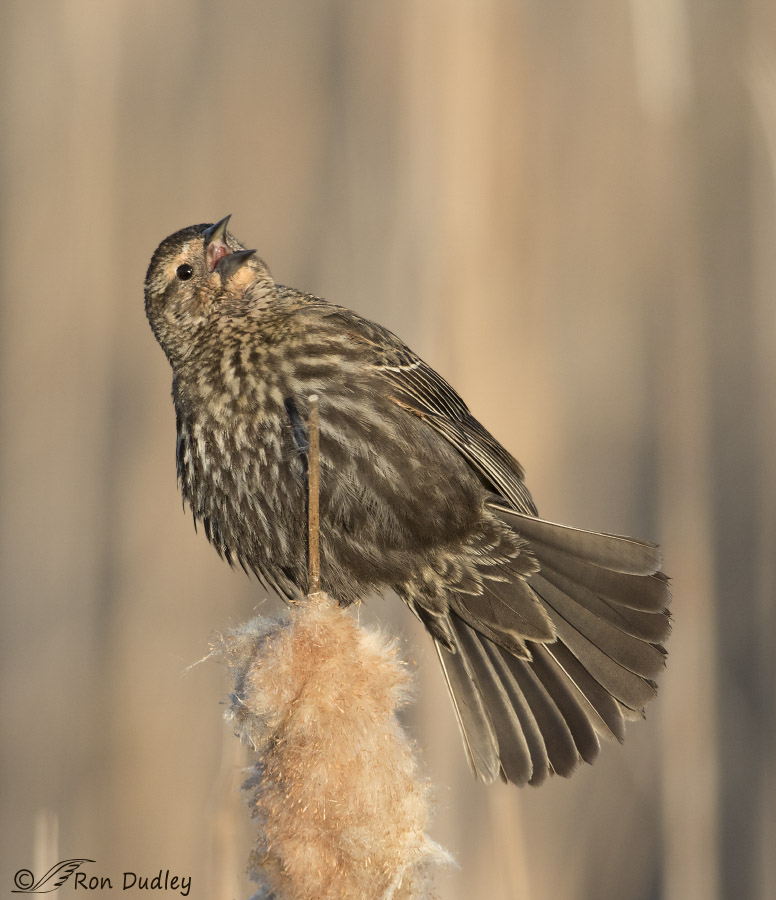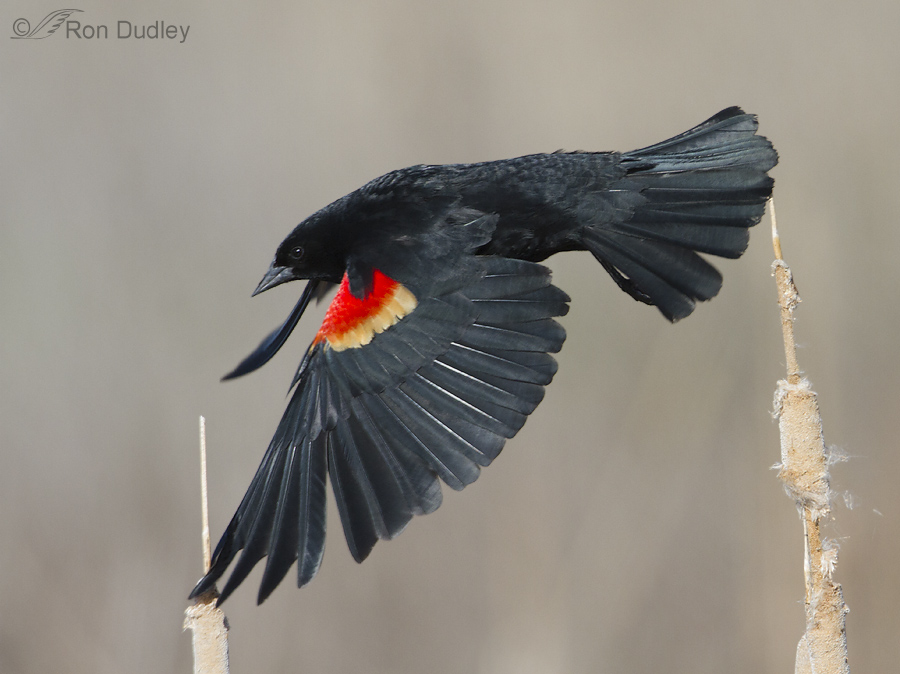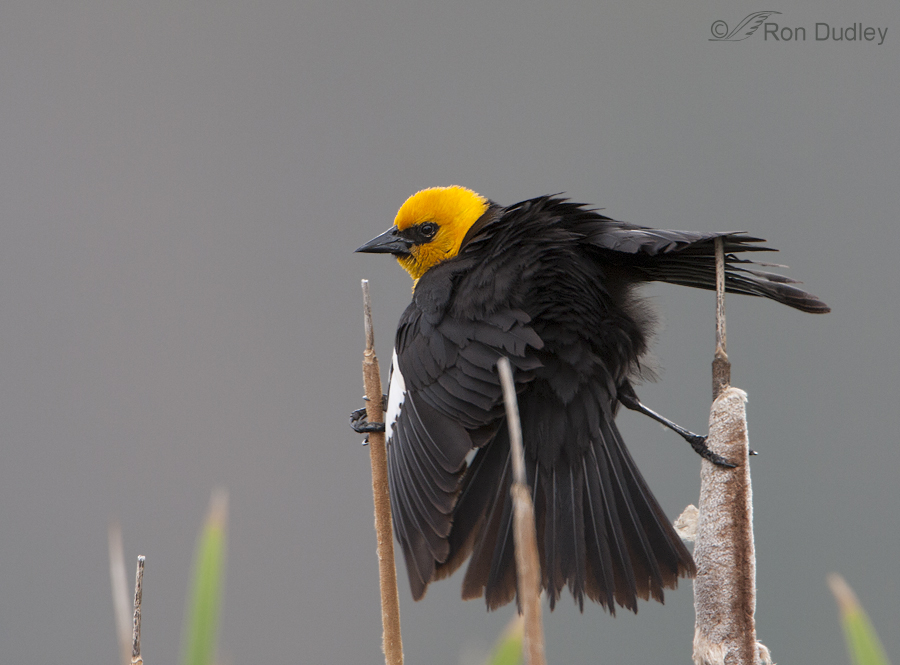Tag: cattail
Peachy Female Red-winged Blackbird (and my FOY Swainson’s Hawk)
Red-winged Blackbird In Flight
A Blackbird Who Taught Me A Lesson
Marsh Wrens of Bear River Migratory Bird Refuge
This week I was finally able to get some decent images of Marsh Wrens. Canon 7D, 1/2000, f/8, ISO 400, 500 f/4, 1.4 tc In the past these birds have always been buried too deeply in vegetation for me to get shots I liked but a couple of days ago they finally cooperated with me. Canon 7D, 1/1600, f/8, ISO 400, 500 f/4, 1.4 tc Marsh Wrens have incredibly interesting behaviors. For example, western males must learn up to 200 different songs (eastern birds only learn about 50). Perhaps that’s why these males sing so much – it would take a lot of practice to learn that many “tunes”. Canon 7D, 1/1600, f/8, ISO 400, 500 f/4, 1.4 tc These birds are extremely territorial and aggressive. They are polygynous (males mate with multiple females) and in order to attract females the male builds from 6 to 22 “dummy” nests for every one that is actually used to raise a brood of chicks. We could see several of these nests buried in the cattails along the refuge road. Canon 7D, 1/2500, f/7.1, ISO 400, 500 f/4, 1.4 tc According to the Bear River Blog many of these nests were destroyed by our recent stormy weather and heavy rains so many of these males have had to start over. Canon 7D, 1/2000, f/8, ISO 400, 500 f/4, 1.4 tc Marsh Wrens of both sexes regularly destroy eggs and chicks of other birds near their territories, including those of…
The Northern Shrike and the Good Samaritan
This blog post will be more about the experience I describe than about the shrike images. The Northern Shrike has been a nemesis bird for me for a long time. I have many good images of its southern cousin the Loggerhead Shrike but the northern is an uncommon winter visitor to the northern US and I’ve seldom seen one and never been close enough to the species for good, detailed images – until this week. And I very nearly didn’t get the shots. Northern Shrike This winter there has been a single (as far as I can tell) Northern Shrike wintering at the Great Salt Lake wetlands where I often shoot but I’ve never been able to get close enough to it for a quality shot. Two days ago I was finally able to approach the bird but it wouldn’t have happened without the kind actions of a good Samaritan. As I was driving down the dirt road I could see the shrike flitting from perch to perch in front of me. Several times I almost got close enough but then it would spook again. Finally, just as I got close and trained my big lens on the shrike, wouldn’t you know it – a car came up behind me on the narrow road. If it had passed it surely would have spooked the bird. But it didn’t. The driver could see my lens pointed out the window at the bird and simply stopped on the road, turned his engine off and waited respectfully for over 5 minutes as I photographed the shrike before it…
Peachy Female Red-winged Blackbird (and my FOY Swainson’s Hawk)
Red-winged Blackbird In Flight
A Blackbird Who Taught Me A Lesson
Marsh Wrens of Bear River Migratory Bird Refuge
This week I was finally able to get some decent images of Marsh Wrens. Canon 7D, 1/2000, f/8, ISO 400, 500 f/4, 1.4 tc In the past these birds have always been buried too deeply in vegetation for me to get shots I liked but a couple of days ago they finally cooperated with me. Canon 7D, 1/1600, f/8, ISO 400, 500 f/4, 1.4 tc Marsh Wrens have incredibly interesting behaviors. For example, western males must learn up to 200 different songs (eastern birds only learn about 50). Perhaps that’s why these males sing so much – it would take a lot of practice to learn that many “tunes”. Canon 7D, 1/1600, f/8, ISO 400, 500 f/4, 1.4 tc These birds are extremely territorial and aggressive. They are polygynous (males mate with multiple females) and in order to attract females the male builds from 6 to 22 “dummy” nests for every one that is actually used to raise a brood of chicks. We could see several of these nests buried in the cattails along the refuge road. Canon 7D, 1/2500, f/7.1, ISO 400, 500 f/4, 1.4 tc According to the Bear River Blog many of these nests were destroyed by our recent stormy weather and heavy rains so many of these males have had to start over. Canon 7D, 1/2000, f/8, ISO 400, 500 f/4, 1.4 tc Marsh Wrens of both sexes regularly destroy eggs and chicks of other birds near their territories, including those of…
The Northern Shrike and the Good Samaritan
This blog post will be more about the experience I describe than about the shrike images. The Northern Shrike has been a nemesis bird for me for a long time. I have many good images of its southern cousin the Loggerhead Shrike but the northern is an uncommon winter visitor to the northern US and I’ve seldom seen one and never been close enough to the species for good, detailed images – until this week. And I very nearly didn’t get the shots. Northern Shrike This winter there has been a single (as far as I can tell) Northern Shrike wintering at the Great Salt Lake wetlands where I often shoot but I’ve never been able to get close enough to it for a quality shot. Two days ago I was finally able to approach the bird but it wouldn’t have happened without the kind actions of a good Samaritan. As I was driving down the dirt road I could see the shrike flitting from perch to perch in front of me. Several times I almost got close enough but then it would spook again. Finally, just as I got close and trained my big lens on the shrike, wouldn’t you know it – a car came up behind me on the narrow road. If it had passed it surely would have spooked the bird. But it didn’t. The driver could see my lens pointed out the window at the bird and simply stopped on the road, turned his engine off and waited respectfully for over 5 minutes as I photographed the shrike before it…





